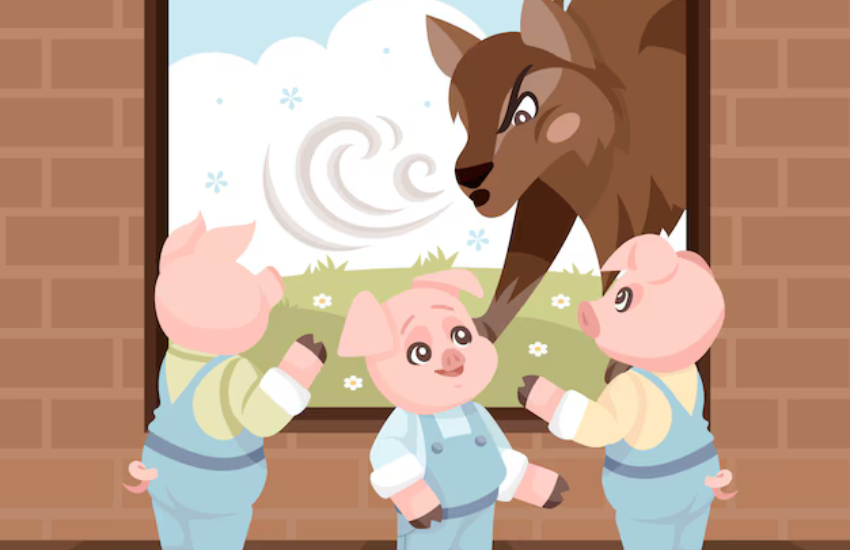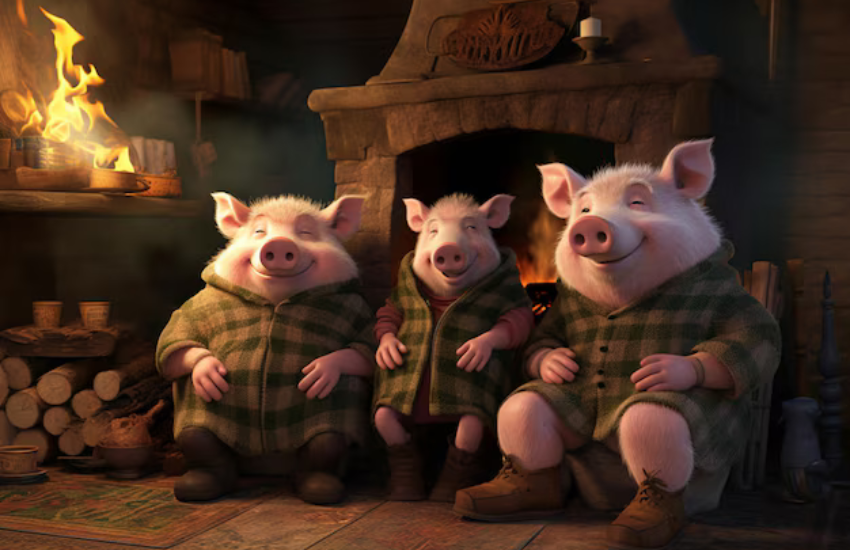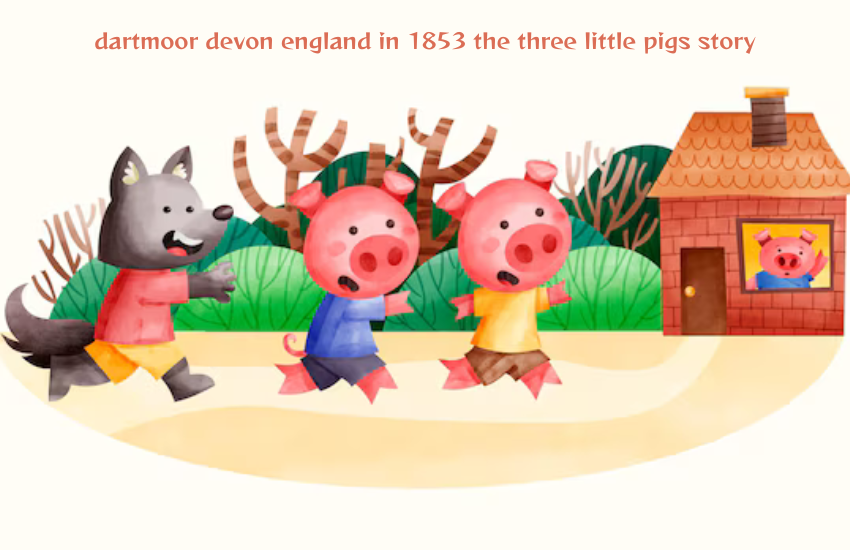Geographical Setting
Dartmoor is located in the county of Devon in South West England. It is a moorland with granite tors, deep river valleys, and vast expanses of heather-covered terrain. In 1853, it was a remote and sparsely populated area, with small communities engaged in farming, tin mining, and wool production.
Historical Context
Life in Dartmoor during the mid-19th century was challenging. The Industrial Revolution was transforming many parts of England, but Dartmoor remained largely untouched by these changes. The local economy relied heavily on agriculture, and the harsh climate and rugged terrain made daily life demanding.
Cultural Background
Devon has a rich tradition of folklore and stories passed down through generations. Tales of ghosts, pixies, and mythical creatures were common, reflecting the mysterious and sometimes harsh environment of Dartmoor. These stories often contained moral lessons and reflected the values and struggles of the local people.

The Three Little Pigs Story
The tale of the Three Little Pigs is a well-known fable that originated in England. It tells the story of three pigs who each build a house—one of straw, one of sticks, and one of bricks. The Big Bad Wolf, representing danger and adversity, attempts to blow down each house. The story highlights the virtues of hard work, foresight, and resilience.
Narrative Overview
In the classic version of the story, the first pig builds a house of straw, the second a house of sticks, and the third a house of bricks. The wolf easily destroys the first two houses but fails to blow down the third, symbolizing the triumph of preparation and sturdiness over laziness and haste.
Setting Adaptation
Reimagining the Three Little Pigs in Dartmoor involves adapting the story to fit the local environment. The pigs could use materials typical of Dartmoor, such as granite and thatch. The moor’s isolated setting would enhance the story’s tension, as the pigs would need to rely on their wits and resourcefulness to survive.
Characters
The Three Little Pigs in this Dartmoor adaptation would reflect the characteristics of local villagers—hardworking, practical, and deeply connected to the land. The Big Bad Wolf could represent the challenges of nature or the encroaching changes brought by the Industrial Revolution.
Themes and Morals
The story’s themes of perseverance, ingenuity, and the importance of strong foundations resonate well with the historical context of Dartmoor. These values were essential for survival in such a harsh environment, making the story not just entertaining but also educational.
Architectural Styles
Housing in Dartmoor during 1853 included stone cottages and thatched roofs, built to withstand the weather. Comparing these to the pigs’ houses, we see parallels in the use of available materials and the importance of building solid structures for protection and comfort.
Survival and Ingenuity
The journey of the Three Little Pigs mirrors the real-life struggles of Dartmoor’s inhabitants, who had to be resourceful and resilient. This parallel adds depth to the story, making it a reflection of the human condition and the fight for survival against the odds.
Wolves in Folklore
Wolves, though not native to 19th century Dartmoor, feature prominently in English folklore as symbols of danger and fear. This adaptation could use the wolf to represent external threats faced by the villagers, such as harsh weather or economic hardship.
Comparison to Other Tales
The Three Little Pigs shares similarities with other English folk tales, such as “Jack and the Beanstalk” and “Little Red Riding Hood,” which also involve clever protagonists outwitting a formidable adversary. These stories often convey moral lessons about bravery, intelligence, and the virtues of hard work.
Impact of Industrialization
The Industrial Revolution brought significant changes to England, even reaching remote areas like Dartmoor. This backdrop can add another layer to the story, with the pigs’ struggle against the wolf symbolizing the tension between tradition and progress.

Educational Use
The story of the Three Little Pigs, set in Dartmoor, can be a powerful educational tool. It provides insights into local history, geography, and culture while teaching valuable life lessons. Educators can use it to engage students with a blend of literature and historical context.
Conclusion
The enduring appeal of the Three Little Pigs lies in its universal themes and adaptable narrative. By setting the story in Dartmoor, Devon, in 1853, we not only preserve its charm but also enrich it with historical and cultural significance, making it a timeless tale of resilience and ingenuity.
FAQs
1. Why was Dartmoor chosen as the setting for this adaptation?
Dartmoor’s rugged landscape and rich history provide a perfect backdrop that enhances the themes of survival and resourcefulness in the Three Little Pigs story.
2. What materials would the pigs use to build their houses in Dartmoor?
The pigs might use local materials such as granite, thatch, and timber, reflecting the traditional building styles of the area.
3. How does the Industrial Revolution influence the story?
The Industrial Revolution represents the external challenges and changes that the pigs (and local inhabitants) must adapt to, paralleling the wolf’s role as an agent of adversity.
4. Are there any historical records of wolves in Dartmoor?
Wolves were extinct in Britain by the 19th century, but they remain potent symbols in folklore, representing fear and danger.
5. How can this story be used in education?
Teachers can use the adapted story to explore themes of resilience and resourcefulness while teaching about the historical and geographical context of Dartmoor.
6. What lessons does the story impart?
The story emphasizes the importance of hard work, planning, and building strong foundations, both literally and metaphorically, to withstand life’s challenges.


